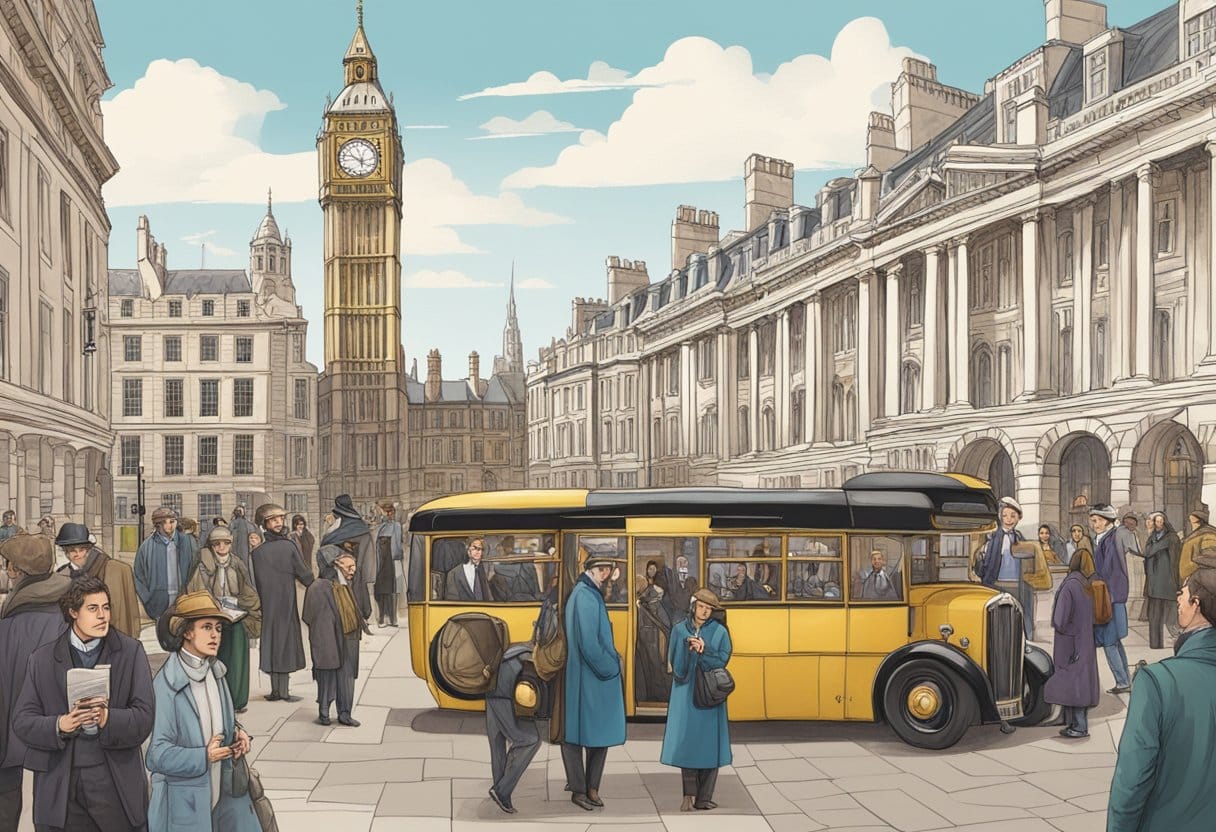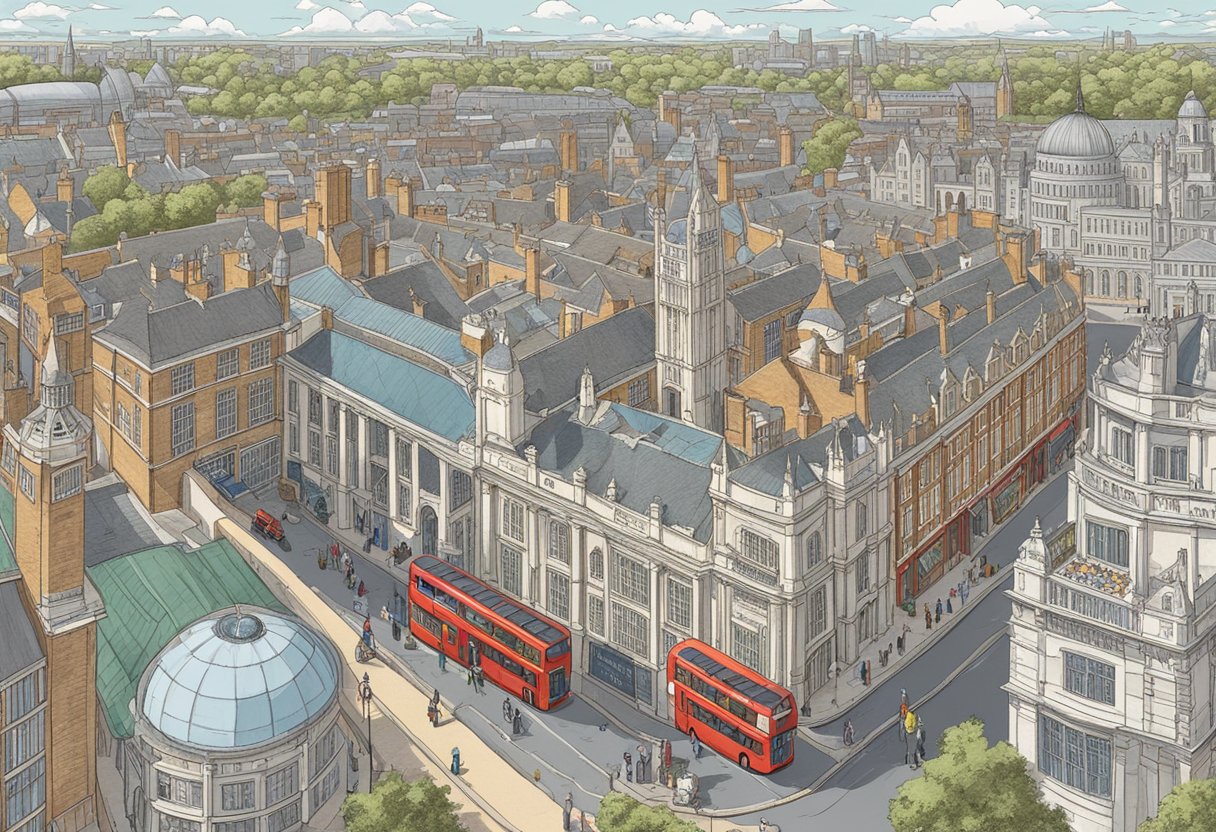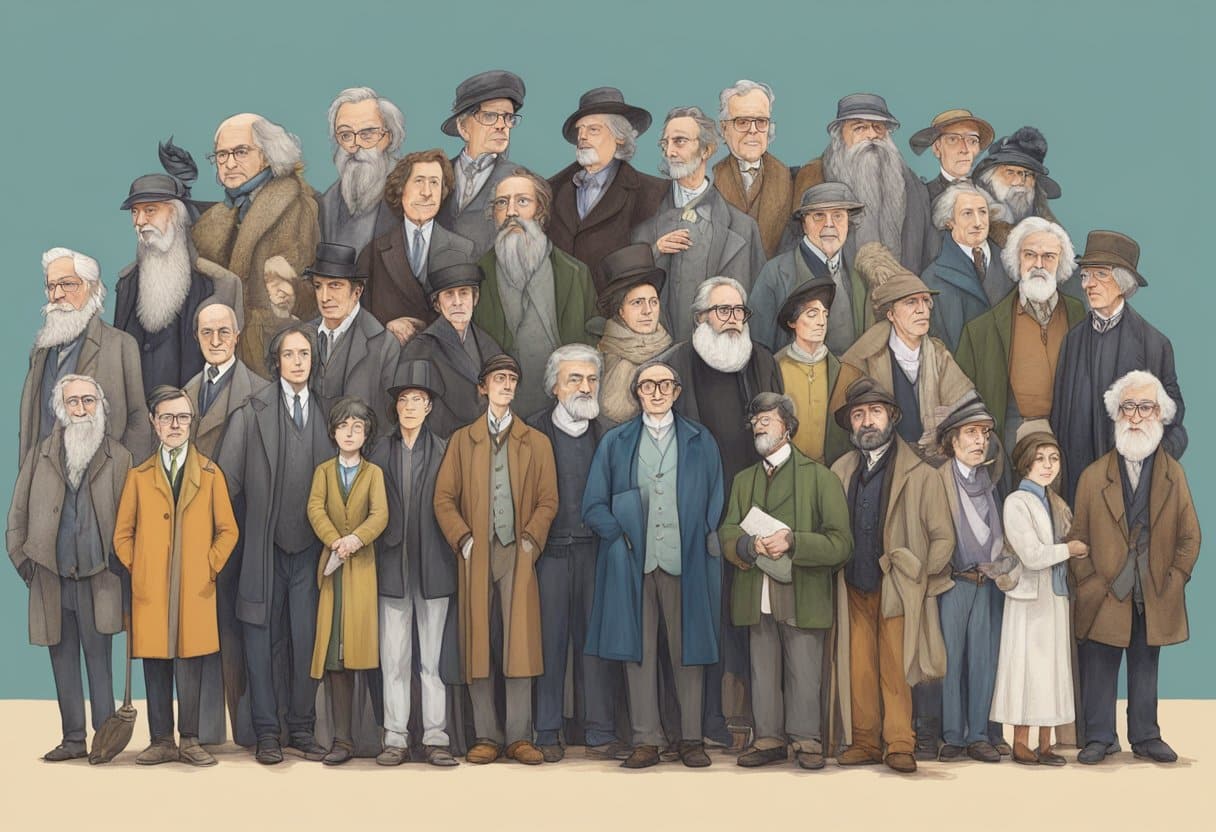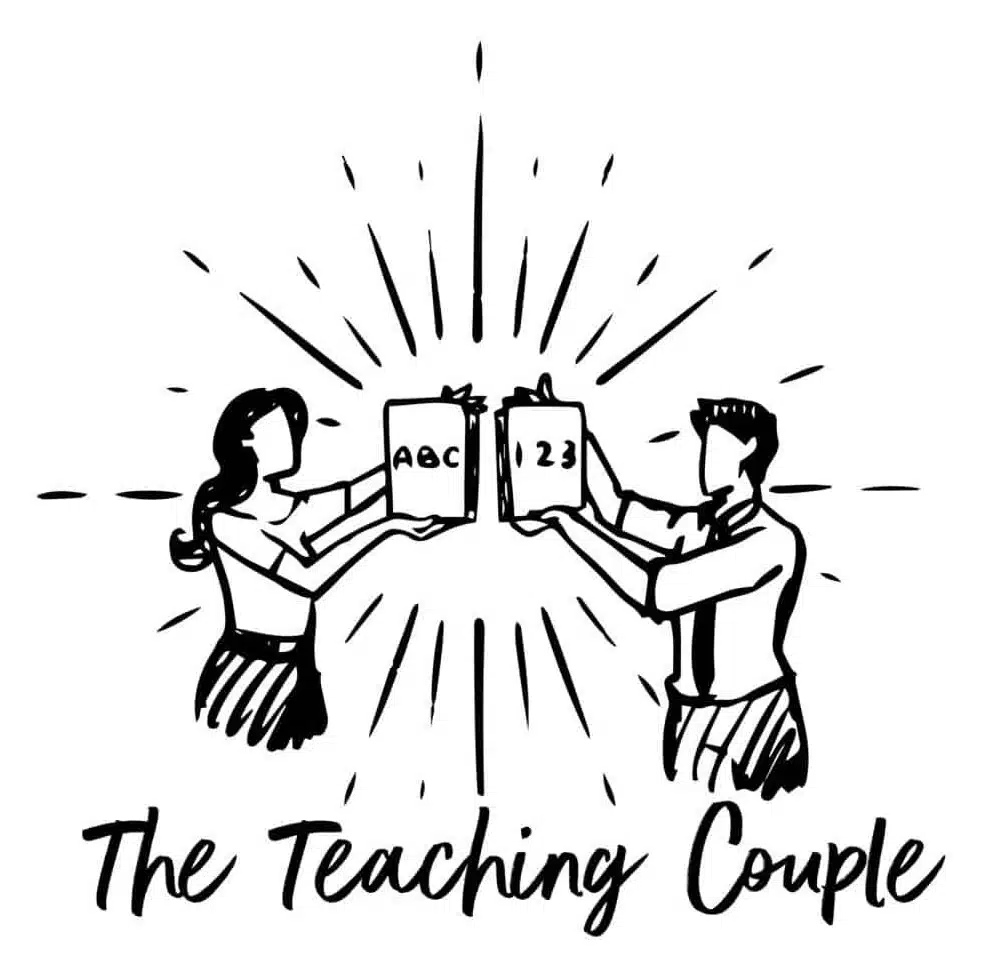London serves as both muse and cradle for a pantheon of poets whose voices have echoed through the cobblestone streets and along the winding River Thames for centuries.
The city’s rich tapestry of history and culture has been a relentless source of inspiration for literary mastery, providing a backdrop for some of the English language’s most cherished verses.
Esteemed figures strut across the stage of London’s literary theatre, each shaping and reflecting the city’s essence through their enduring art.
Related: For more, check out our article on The Top Poets From England here.

The interplay between London’s architecture and the rhythm of life within it has seen the city immortalised in lines of poetry that capture its contrasts—from the gaudy opulence of its royal palaces to the stark realities of Newgate’s gallows.
As London evolved, it became a character in its own right within the works of poets who celebrated, critiqued, and brought to life the city’s multifaceted identity.
Beyond the bounds of mere geography, London emerges as a symbol of art and progress—a font of never-ending stories for those who wield the pen with passion and purpose.
Key Takeaways
- London’s heritage has been profoundly shaped by the poets who have both drawn inspiration from and significantly contributed to the city’s literary legacy.
- Poetry has captured the essence of London, reflecting the city’s complexities and its role in the evolution of English literature.
- The tradition of poetic excellence continues with modern voices that articulate the contemporary London experience through a rich legacy of literary arts.
Related: For more, check out our article on The Top Poets From Northern Ireland here.
Eminent Poets and Their Works
London has birthed and inspired some of the most prolific poets in English literature, each leaving a distinctive mark on the poetic landscape with their timeless works.
The Legacy of William Blake
William Blake, a poet of remarkable originality, harnessed both his artistic and literary skills to create works profound in their socio-political commentary.
His collection Songs of Innocence and of Experience juxtaposes the two contrasting states of the human soul, often using London itself as a backdrop to explore themes of poverty, exploitation, and the loss of innocence.
The Romantic Verses of William Wordsworth
William Wordsworth’s poetry, filled with a love for nature, focuses on the deep emotional responses evoked by the natural world.
In his sonnet “Composed Upon Westminster Bridge,” Wordsworth offers a serene perspective of London at dawn, appreciating its beauty in the quiet early hours free from the hustle and bustle of the day.
The Victorian Insights of Charles Dickens
Although primarily known for his novels, Charles Dickens also displayed a lyrical quality in his writings, capturing the essence of Victorian London.
His works provide insightful social commentary on the era, reflecting on the lives of London’s denizens from the gritty alleys to the grand mansions.
T.S. Eliot and the Modernist Movement
T.S. Eliot, one of the leading figures of the Modernist movement in poetry, broke new ground with his complex and often fragmented poetic form.
His renowned poem “The Waste Land” is a kaleidoscopic journey through the modern world, famously opening with a line about April, filled with rich allusions and a diversity of voices that echo the chaotic rhythm of 20th-century life.
Related: For more, check out our article on The Top Poets From Scotland here.
London’s Influence on English Literature
London’s rich tapestry has woven itself into the fabric of English literature, leaving an indelible mark through works that articulate its visceral cityscape and the historical significance of its literary hubs.
The Urban Muse: London’s Cityscape in Poetry
London’s metropolitan charm has perennially served as an urban muse for countless poets. Westminster Abbey, a site of both coronations and final resting place for literary figures, frequently appears in literature as a symbol of national importance and contemplation.
“Ode to a Nightingale,” penned by John Keats, is a seminal piece that, although not set in London, was composed by the poet whilst residing in the city, reflecting the broader English Romantic reverence for nature which often juxtaposed the dynamic urban environment.
In stark contrast, William Blake’s “London” from Songs of Experience grimly portrays the city’s underbelly during the Industrial Revolution.
Blake directly engages with the shadowed alleys of London life, resonating with the societal issues that Charles Dickens later explores in novels like Oliver Twist.
The prevalent squalor and endemic poverty of London’s East End paint a historical context that enriched literary narratives with authenticity and critical social commentary.
Literary Hubs: From Chelsea to Hampstead Heath
Chelsea and Hampstead Heath have historically been hubs of literary activity, attracting writers and intellectuals who have shaped English literature.
Chelsea, known for its bohemian reputation in the 19th century, became a crucible for artists and writers, inspiring works that delve into the complexities of modern life.
The area features in Oscar Wilde’s plays as a representation of fashionable society, while in more recent times, it has continued to be a setting within contemporary fiction.
Hampstead Heath’s lush landscapes have provided a bucolic backdrop for narratives and poems, notably capturing the hearts of the Romantic poets.
Its idyllic nature serves as an oasis in the urban sprawl, a theme that John Keats touches upon with his “Ode to a Nightingale.”
The poem evokes the beauty of the countryside which, while embedded in the outskirts of the city, projects a striking contrast to the industrial heart of London.
Detective Sherlock Holmes, a fictional creation of Sir Arthur Conan Doyle, further immortalised London’s streets through his adventures, most of which are set within the city’s well-trodden paths.
London, therefore, stands not only as a physical locale but also as a character in itself within these narratives, influencing plotlines and providing fodder for the imagination with its endless possibilities and distinctive character.
Related: For more, check out our article on The Top Poets From Wales here.
Celebrated Venues of Literary Significance

London’s literary landscape is marked by sites intertwining the city’s rich cultural fabric with its history of poetic and narrative genius.
From hallowed resting places to homes preserving the legacies of literary figures, these venues stand as testaments to the city’s reverence for written artistry.
The Cultural Richness of Southwark and Westminster
Southwark and Westminster resonate with historical significance, with Southwark fostering the talents of Geoffrey Chaucer and Shakespeare.
It is in Westminster Abbey, however, that one discovers Poets’ Corner, an illustrious enclave honouring the icons of English literature.
Here, visitors tread softly amongst monuments and memorials dedicated to the likes of Chaucer, Shakespeare, and many others who have shaped the contours of English writing.
- Westminster Abbey – Poets’ Corner
- Memorials: Chaucer, Shakespeare, etc.
- Visitation: Open to public (fees applicable)
Continuing outside, Westminster Bridge offers a contrasting experience of the poetic cityscape, forever immortalised in Wordsworth’s sonnet, where it stands as both a literal and metaphorical crossing between creativity and commerce, history, and modernity.
Keats House and the Charles Dickens Museum
Moving from the public to the personal, Keats House in Hampstead, once home to John Keats, provides an intimate glimpse into the Romantic poet’s life and works.
The tranquillity felt within the walls of this house echoes the pastoral beauty often found in Keats’s odes and sonnets.
- Keats House
- Location: Hampstead
- Significance: Keats’s former home and inspirational site
In contrast, the Charles Dickens Museum in Bloomsbury opens a window into the Victorian era through the preserved dwelling of the celebrated novelist.
It is a treasure trove of artefacts and personal belongings of Dickens, who sketched the vibrancy and the stark inequalities of London life like no other.
- The Charles Dickens Museum
- Location: Bloomsbury
- Collection: Dickens’s personal belongings, manuscripts, rare editions
Each venue not only celebrates the individual writer but also serves as a chronicle of London’s broader cultural and historical narrative.
They remain pivotal for anyone seeking to understand the enduring impact of London’s literary greats.
Related: For more, check out our article on The Top Poets From Ireland here.
Iconic Literary Characters and Their Creators

London’s history is rich with literary giants who created characters who have transcended generations and continue to remain at the forefront of classic literature.
The Enduring Popularity of Sherlock Holmes
Sir Arthur Conan Doyle is intrinsically linked to the creation of Sherlock Holmes, the fictional detective renowned for his keen observation and deductive reasoning.
Holmes first appeared in ‘A Study in Scarlet’ in 1887 and quickly became a beloved character. The detective’s home address, 221b Baker Street, has become a destination for fans around the world.
Today, the Sherlock Holmes Museum commemorates the character and attracts visitors who wish to experience a slice of Victorian London and the atmospheric world of the famous investigator.
- Books Featuring Sherlock Holmes: A Study in Scarlet, The Sign of Four, The Hound of the Baskervilles, The Adventures of Sherlock Holmes.
The Complex Worlds of Shakespeare’s Plays
William Shakespeare, often hailed as the greatest playwright of English literature, created a myriad of characters who have become iconic in their own right.
His plays present complex worlds that explore the depths of human emotion and the intricacies of society.
Characters such as Hamlet, Othello, and Macbeth have become cultural reference points, and their stories are studied and performed around the globe, continuing his legacy.
- Notable Plays by Shakespeare: Hamlet, Othello, Macbeth, Romeo and Juliet, A Midsummer Night’s Dream.
Each of these literary figures has crafted worlds and characters that resonate deeply with readers and audiences, cementing their places as towering figures of London’s literary landscape.
Related: For more, check out our article on Examples of Free Verse Poetry here.
The Modern Voices of London
In the ever-evolving landscape of London’s literary scene, today’s poets are carving out new spaces for expression.
They bring the city’s narratives to life with innovative spoken word performances and poetic works that resonate with contemporary audiences.
Kate Tempest: A Fresh Take on London’s Narratives
Kate Tempest stands out as a defining voice of modern London. Winner of the prestigious Ted Hughes Award, her poems delve into the heart of city life with a raw honesty that captures the spirit of Hackney and beyond.
Tempest’s works, which also expand into the realm of novels and music, challenge traditional forms, reflecting the dynamic nature of literature in London.
The Spoken Word Scene in Contemporary London
The spoken word movement has taken London by storm, providing a platform for a diverse array of voices to be heard. In small cafés and grand auditoriums alike, performers weave stories through rhythm and rhyme, offering fresh perspectives on the city’s culture.
This vibrant scene celebrates the oral tradition, pushing the boundaries of what spoken word in London can be.

